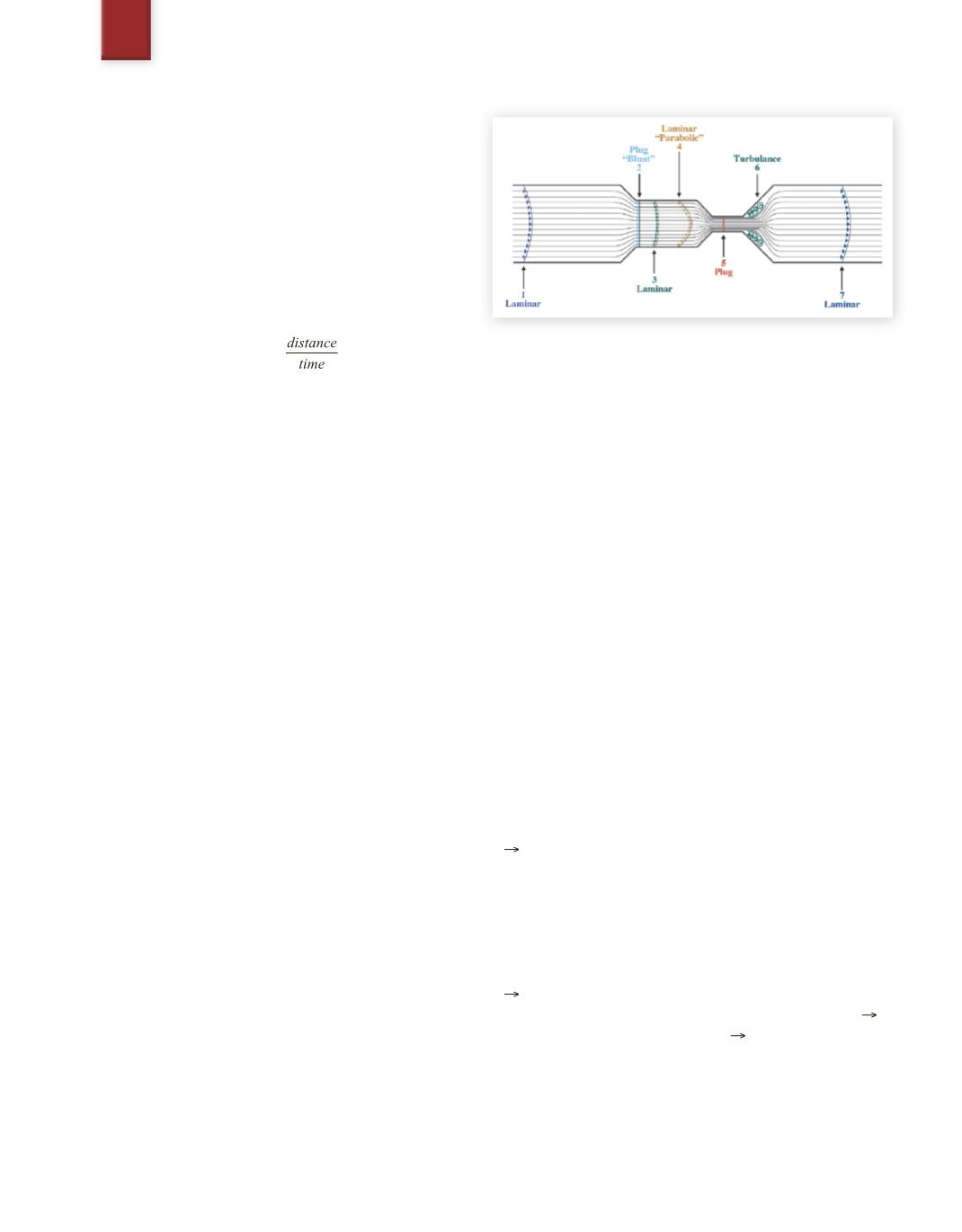
394
Level 2
Board Level
Disturbed flow:
Disturbed flow is any deviation from laminar
flow.
Turbulent flow:
When a fluid does not move in a “well behaved”
manner nor in a uniform direction. Turbulence
is chaotic or random, disturbed flow which
occurs distally to a stenosis or narrowing (exit
effect).
Velocity:
Recall that velocity was defined earlier as the rate
at which something is moving in a particular
direction and has units of:
Acceleration:
Acceleration is the change of velocity over time.
A positive acceleration means an increase in
velocity.
A negative acceleration means a
decrease in velocity and is also referred to as a
deceleration.
Entrance effects:
The change in velocity profile which results when
entering into a vessel of reduced diameter. Since
there is a decrease in area, the velocity must in-
crease (acceleration) to maintain constant flow.
This acceleration results in a flattening of the
velocity profile.
Exit effects:
The change in velocity profile which results when
exiting from a vessel of smaller diameter. Since
there is an increase in area, the velocity must
decrease (negative acceleration) to maintain
constant flow. Inertial energy is dissipated by
chaotic or turbulent flow.
Perhaps one of the easiest ways to develop an understanding of the
significance of these terms is to analyze a flow conduit with changing
dimensions. For this case,we will constrain our flowmodel to meet
the assumptions that were made to develop the equations. Namely,
the tube will be rigid, the tube walls will be regular and smooth,
the fluid will be incompressible and homogenous, the flow will be
steady state, and the energy losses through heat will be negligible.
5.3 Steady Flow Diagram in a Rigid Tube
Fig. 16
Flow through a rigid tube
The following descriptions of flow and flow regions refer to
Figure 16.
Region
1)
Laminar Flow:
Concentric rings of flow through a wide segment
of the vessel (parallel streamlines). Each “ring” of
fluid flows orderly, not crossing or colliding with
any other ring. There is not much frictional loss
since very little of the fluid comes in contact with
conduit walls.
2)
Plug Flow:
(An entrance or inlet effect.) According to the
volumetric flow equation (continuity equations),
to maintain constant volumetric flow, the velocity
must increase because of the decrease in cross-
sectional area. Achange in velocity with respect to
time is the definition of acceleration. As the fluid
reaches region 2, there is acceleration to maintain
flow. The acceleration results in a flattened velocity
profile.
3 4) Parabolic Laminar to Steeper Parabolic Laminar:
Notice how the laminar flow is flattened in region
2 but more distally becomes a parabolic shape in
region 3. Since the narrowed segment is long with
respect to the diameter, more distally (region 4), a
sharper parabolic flow velocity profile develops.
4 5) Parabolic Laminar to Plug Laminar:
Just as occurred at the transition from region 1 2,
acceleration from region 4 5 flattens the velocity
profile in order to maintain a constant volumetric
flow (entrance effect).
SAMPLE PAGE


